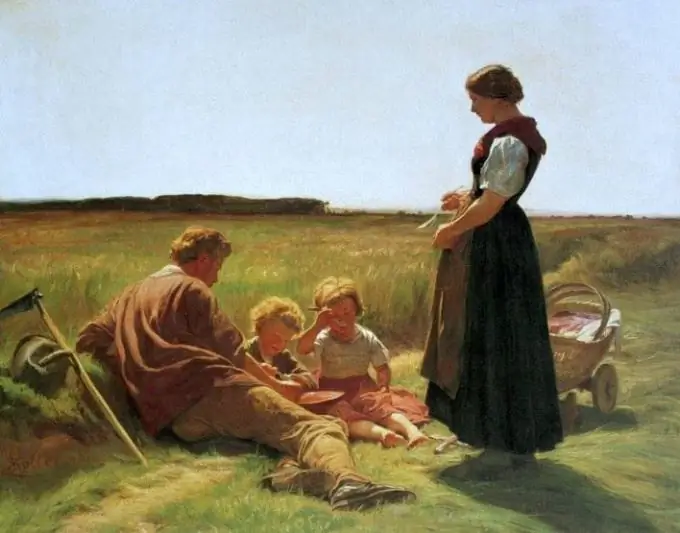- Author Antonio Harrison [email protected].
- Public 2023-12-16 07:44.
- Last modified 2025-01-22 21:44.
To be considered a cultured person, you need to know the history of your country and understand the terms and words that are now out of use for a long time, but were once used often. This will help to better perceive historical and fiction literature, to understand the essence of events and things. These terms include the word quitrent, which has existed in Russia since the 9th century and has ceased to be used quite recently - since 1883.

Peasant service
Feudal relations are characterized, among other things, by the numerous duties or tribute that the feudal lords levied on the peasants who lived on their lands. Such a duty, which was originally paid in kind - the products of peasant labor - was a quitrent. Russian feudal lords - princes and boyars - began to take it in the 9th century; it, in fact, was a tribute that peasants paid for patronage. Subsequently, by the 13th century, the quitrent becomes obligatory and its size becomes fixed.
With the emergence of commodity-money relations, the peasants have the opportunity to exchange the fruits of their labor for money, and they begin to pay the quitrent both in kind and in cash. It was a kind of tax and they began to levy it in accordance with the economic situation of a particular peasant farm, since their property stratification is becoming more and more noticeable.
During the time of Ivan the Terrible, serfdom, as such, did not yet exist - the peasants could once a year, at the end of November, move from one landowner to another, if the former did not suit them with something. Under Boris Godunov in 1607, this order was abolished and the peasants actually turned out to be serfs - attached to a specific landowner. Serfdom served as an incentive for the formation of the landlord system and legalized extortions from the peasants, increasing them - now they were forced not only to pay the landlords quitrent, but also to work off the corvee, i.e. work for the master for free.
Abolition of serfdom and rent
In the first half of the 19th century, with the emergence and development of industry, the collapse of the feudal system began, which was accelerated by peasant revolts and uprisings. The situation of the peasants became more and more difficult, the number of days that they had to work in corvee constantly increased, and the amount of quitrent, which was already paid, mainly in cash, also increased.
The reforms carried out by Emperor Alexander II in 1861 led to the abolition of serfdom and a revision of the relationship between landlords and peasants, who could now rent land and work for themselves. The natural quitrent was abolished along with serfdom, but temporarily liable peasants paid money until 1883. This year, all dues payments were replaced by redemption payments - an analogue of modern taxes.




